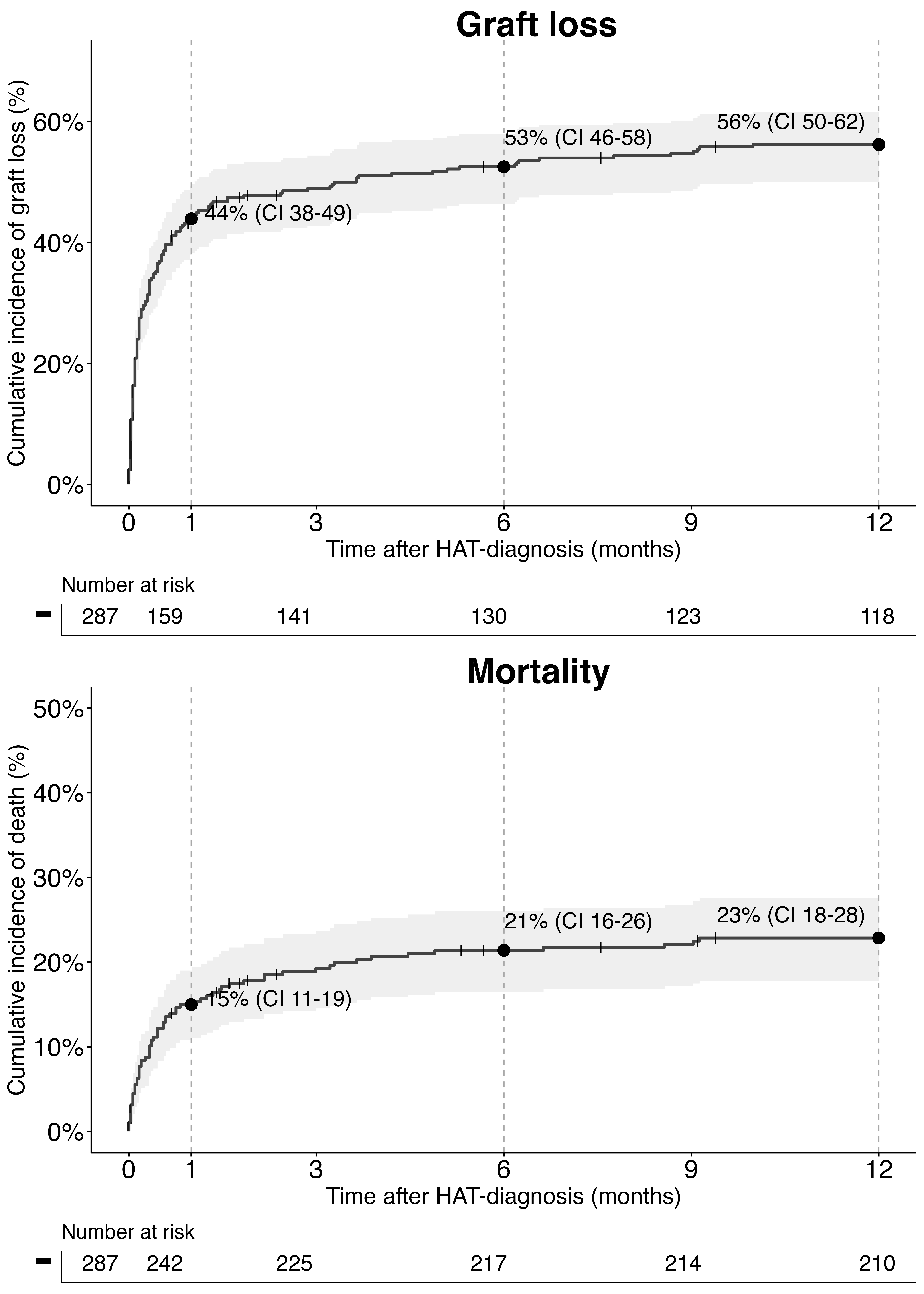
Poor one-year outcomes of hepatic artery thrombosis after pediatric liver transplantation: Results from an international, multicenter, real-world registry
Weihao Li1, Reinoud P.H. Bokkers1, Rene Scheenstra2, Rudi A.J.O. Dierckx3, Hermien Hartog4, Hubert P.J. van der Doef2.
1Department of Radiology, Medical Imaging Centre, University Medical Centre Groningen, Groningen, Netherlands; 2Division of Paediatric Gastroenterology and Hepatology, Department of Paediatrics, University Medical Centre Groningen, Groningen, Netherlands; 3Department of Nuclear Medicine and Molecular Imaging, Medical Imaging Center, University Medical Center Groningen, Groningen, Netherlands; 4Department of Surgery, Section of Hepatobiliary Surgery & Liver Transplantation, University Medical Center Groningen, Groningen, Netherlands
HEPATIC Registry.
Background: Hepatic artery thrombosis (HAT) after pediatric liver transplantation (pLT) is a severe complication that can lead to acute graft failure, often requiring urgent re-transplantation. Despite its significance, the outcomes of HAT after pLT remain poorly characterized. This study aimed to determine the one-year incidence of graft loss and mortality, and to identify associated risk factors in patients who develop HAT after pLT.
Methods: We analyzed 8,469 pLT recipients from the HEPatic Artery Stenosis and Thrombosis after Liver Transplantation in Children registry, which comprised data from 24 centers across 20 countries over a 20-year period. Clinical characteristics were examined at three timepoints: pre-transplant, immediate post-transplant, and HAT diagnosis. Risk factors for graft loss and mortality were identified through multivariate Cox regression analyses, with model assumptions verified using Schoenfeld residuals.
Results: HAT occurred in 3.4% of patients (n=287, 53% female, median age 1.8 years). Following the diagnosis of HAT, the cumulative incidence of graft loss was 44% (95% CI 38–49) at one month and 56% (95% CI 50–62) at one year. Mortality rates were 15% (95% CI 11–19) and 23% (95% CI 18–28) at these respective timepoints. Multivariate Cox regression analysis identified three independent risk factors for one-year graft loss: aspartate aminotransferase (AST) ≥ 1000 U/L, an international normalized ratio (INR) ≥2, and dialysis at HAT diagnosis (each p <0.05). Independent risk factors for one-year mortality included cirrhotic primary diseases, living donor pLT, AST ≥ 1000 U/L, INR ≥ 2, and dialysis at HAT diagnosis (each p <0.05).
Conclusions: Patients with HAT after pLT experience notably high rates of graft loss and mortality, particularly within the first month following diagnosis. The risk factors identified at HAT diagnosis aid in risk stratification, underscoring the critical need for prevention, screening, and supportive care in high-risk populations.

[1] hepatic artery thrombosis
[2] pediatric liver transplantation
[3] graft survival
[4] patient survival